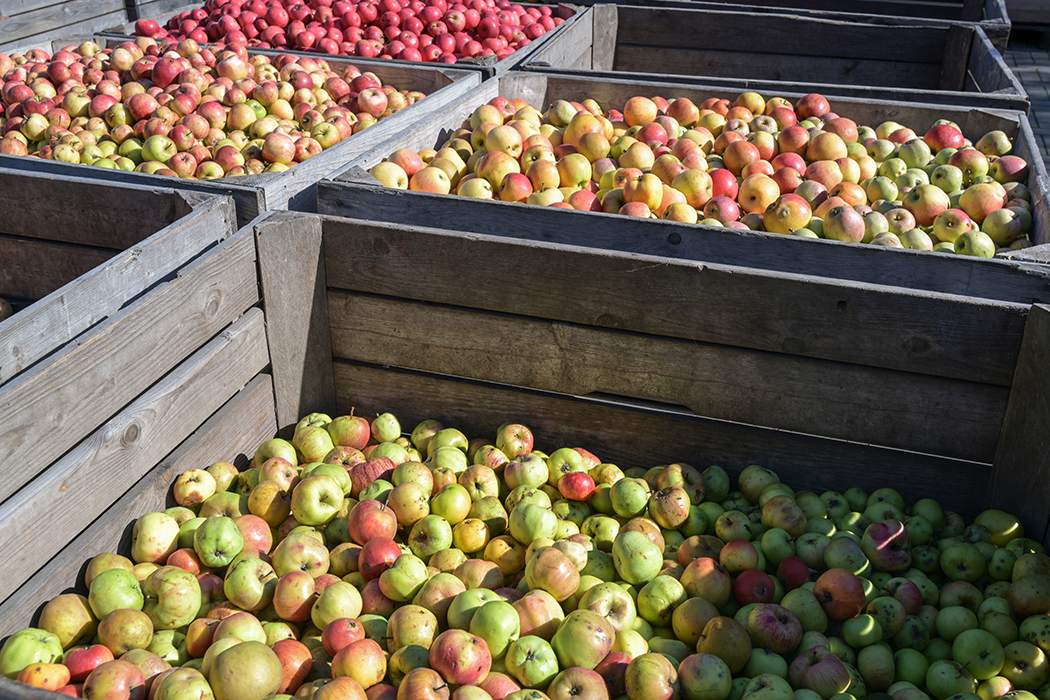It’s well known that our founding fathers brewed beer, distilled whiskey, and, in the case of Thomas Jefferson, worked diligently to make wine in Virginia. But cider, too has been in production since the Colonial era—both Washington and Jefferson also grew apples and brewed cider. The industrial revolution saw a decline in the cider industry, but these days the beverage is experiencing a resurgence in the state.
Traditional cider comes from apples specifically selected for cider making, because they are not necessarily “good eating.” Cider apples can taste sour from high acidity or bitter from high tannin content. Just like in winemaking, these components provide structure, mouthfeel, texture, and complexity of flavor, and make cider a beautiful pairing with food.
Patrick Collins of Patois Cider explains that “cider isn’t monolithic,” and therefore there’s “lots of versatility with potential pairings based on varietal, terroir, cellar techniques,” and so on. He says that many ciders are “delicate and nuanced” and may get lost with heavy sauces. He suggests pairing them with “strong singular flavors like soft-ripened cheese.”
One example is Arkansas Black from Albemarle CiderWorks. It has delicate flavors of green apples and melons, refreshing acidity, and a bit of tannic structure that brings a slight minerality. In addition to pairing well with a soft triple-cream cheese, it works well with oysters, shellfish, or truffled pasta and dishes with a lighter white sauce.
Potter’s Craft Cider’s Pelure goes in a very different direction, intentionally keeping juice in contact with the skins for an extended period of time and aging in oak for 10 months, much like a red wine. The resulting tannic structure is balanced by acidity and a light bubbly effervescence that lifts what otherwise might be a very heavy and structured cider. This cider is not for everyone, it can accurately be described as “funky” or “meaty,” and it can be paired with heavier food. Try it with roast chicken, salami, sausages on the grill, or venison stew.
Patois Cider’s Bricolage is a sparkling cider made in the traditional method (the same method as Champagne) and produced entirely from foraged fruit. The bubbles and fruit aromas might give the initial impression of a light and whimsical cider, but you’ll find complex and deep flavors that bring to mind flowers, dried apricot, tart plums, and wet stone. It begs to be paired with food and is versatile enough to drink through your whole meal. A classic cider pairing with roast pork works exceedingly well, but also try it with fried chicken, roasted whole fish, and smoked mushroom tacos.
